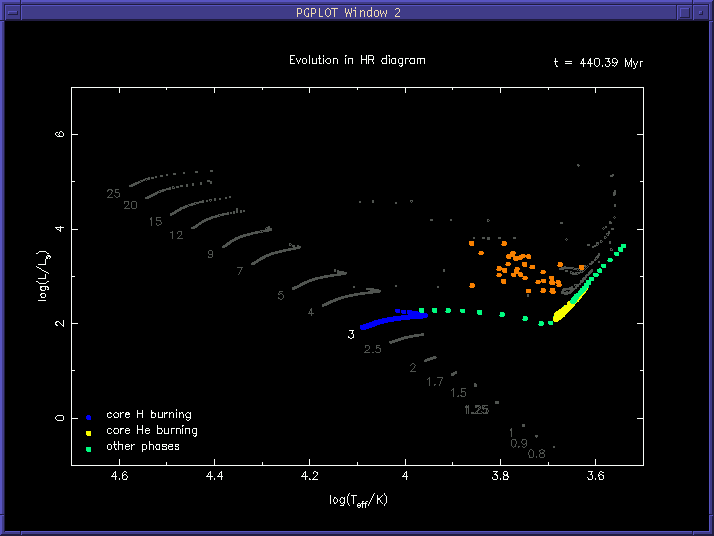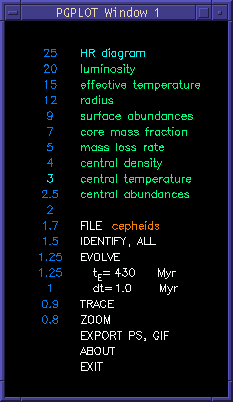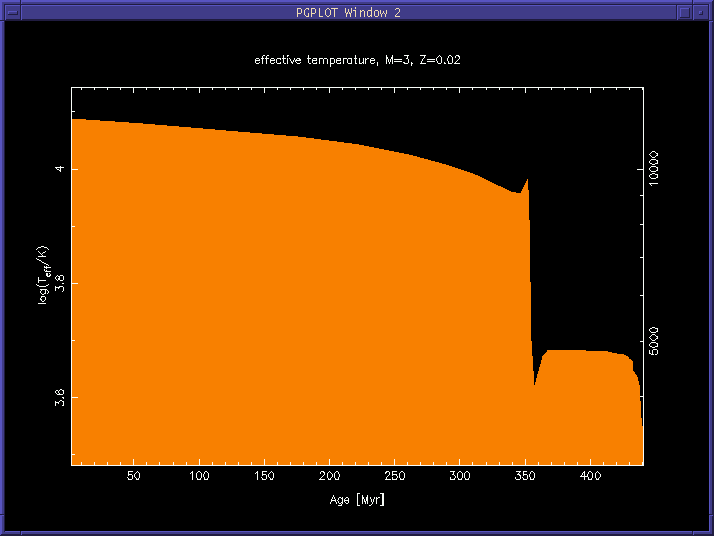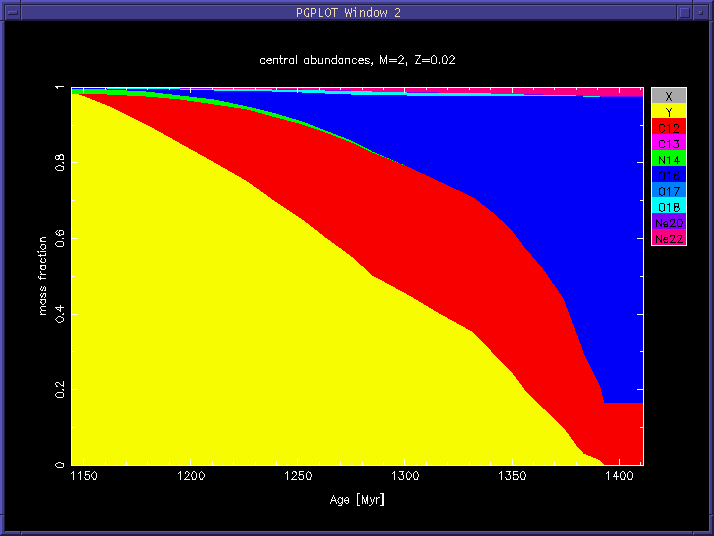 |
EVOLVE regime, where you can investigate evolutionary paths of stars
with various masses and chemical compositions. The evolutions in this
model start on main sequence. The density of dots indicates that
some phases of evolution are very short relative to the time staying on
the main sequence. Notice that heavier stars evolve much faster than lighter
ones.
The orange dots are cepheids from file
cepheids.dat.
These are very important class of variable stars owing to dependence
of period on absolute magnitude. Thus they serve for distance
determination. |



